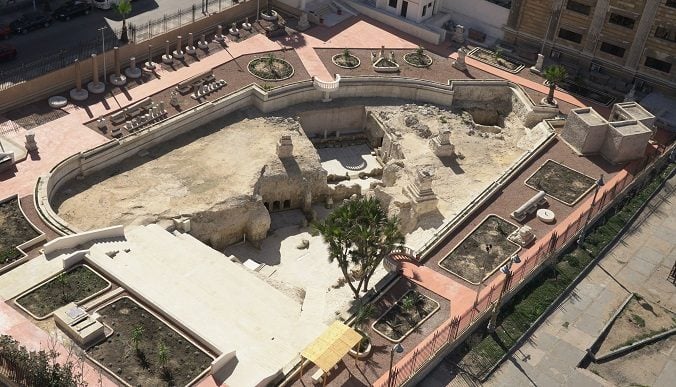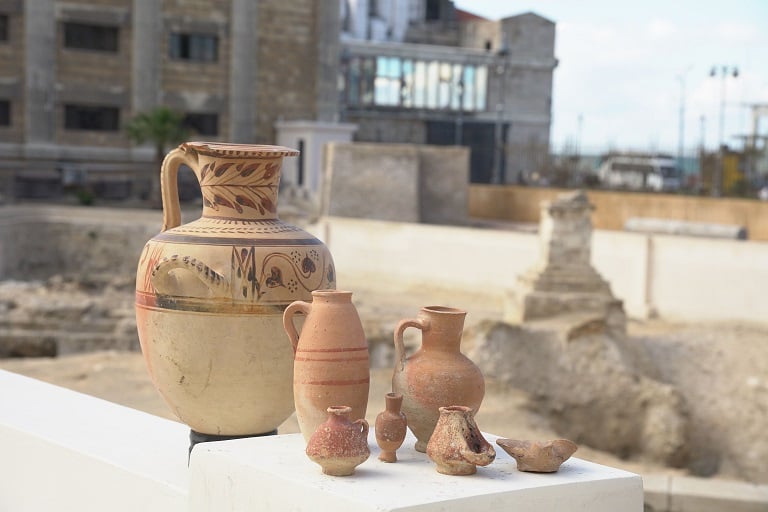
An ancient Greek necropolis of the Hellenistic Era near the present-day Library of Alexandria, Egypt, is set to open to the public from May 8, 2023, following the completion of a thorough three-year preservation project.
The Shatby necropolis, as it is called, dates back to the beginning of the Ptolemaic rule, a few decades after the foundation of the city by Alexander the Great in April of 331 BC, and features several Hypogea, among other tombs, which are burial monuments unique to Alexandria.
The unveiling of the preserved necropolis took place during the international conference “Alexandria and Hellenism in Northern Egypt,” organized on the occasion of the 130th anniversary of the Archaeological Society of Alexandria.
The Alexandrian #Necropolis #Project; open #meeting on new finds through the groundbreaking project that redefines the funerary landscape of ancient #Alexandria. #archaeology https://t.co/1DTdaJrXlV pic.twitter.com/7vvsorpkQI
— Archaeology & Arts (@archaiologia_en) October 24, 2022
Oldest tombs in Alexandria feature monumental Hypogea
Situated east of Alexandria’s Selsela area, the Shatby necropolis was discovered by chance by Giuseppe Botti and Evaristo Breccia at the turn of the 19th century.
It contains the oldest tombs in Alexandria, according to Egypt’s Ministry of Tourism and Antiquities, and traces the development of Alexandrian tombs from modest shaft graves, through gallery tombs, to the monumental Hypogea –a group of underground chambers cut into the bedrock around an open court where the funerary rituals were conducted.

Some chambers feature bed-shaped sarcophagi called kline, after “bed” in Greek, but most contain loculi, rectangular burial niches carved into the walls, the Ministry adds.
Many burials consisted of a niche housing an urn which contained the remains of the deceased after cremation, a tradition that was imported from Greece, it is explained.
Although much of the original decoration is not preserved, enough survives to give tantalizing glimpses into the hypogeum’s past grandeur; many of the walls are sculpted, featuring cornices, engaged columns, and solid pseudo-windows.
300 new finds unearthed from Alexandria necropolis
Archaeologists return to #Shatby, #Alexandria's earliest Hellenistic necropolis, in groundbreaking restoration/upgrade/promotion project, #archaeology, https://t.co/N5D2SAvQjK pic.twitter.com/1BDc4XwRw2
— Archaeology & Arts (@archaiologia_en) March 5, 2020
Having been mostly neglected after its discovery more than a century ago, the historical landmark demanded immediate intervention, targeting not only the site’s survival in the 21st century but also its dynamic return to Alexandria’s archaeological and cultural map, the project’s summary states.
Hence, in 2019, the Archaeological Society of Alexandria, sponsored by the A.G. Leventis Foundation, and under the supervision of the Ministry of Tourism and Antiquities of Egypt, initiated the multifaceted Alexandrian Necropolis Project, aiming not only preserve the monument, but also to upgrade its visitor experience.
The National & Kapodistrian University of Athens (NKUA) was also involved in the excavation, study and documentation of the Shatby necropolis, while digital documentation and 3D-modelling was carried out by the Cyprus Institute.
The on-site works started from the removal of an almost two-meters thick layer of rubble, mud and water, and advanced with the installation of structures to protect the site from further deterioration.
According to the University of Athens, more than 300 new finds were discovered, which included skeletal remains, cinerary urns, and well-preserved local and imported pottery.
Following the competion of the preservation project, visitors will be able to navigate more easily through the necropolis, thanks to the new staircases, paved walkways and lighting installed.

Historic origins of the Archaeological Society of Alexandria
Founded in the year 1893, the Archaeological Society of Alexandria celebrates its 130th anniversary in 2023.
The historic society brings together members of various nationalities whose aim is to protect, preserve and promote Alexandria’s heritage from either the Ptolemaic, Roman, Byzantine or Arab periods of the city.
As a NGO, the Society does not get any financial support from the Egyptian state. Its funds come from the subscriptions of its members and donations, and are to be spent exclusively on archaeological research.
See all the latest news from Greece and the world at Greekreporter.com. Contact our newsroom to report an update or send your story, photos and videos. Follow GR on Google News and subscribe here to our daily email!



